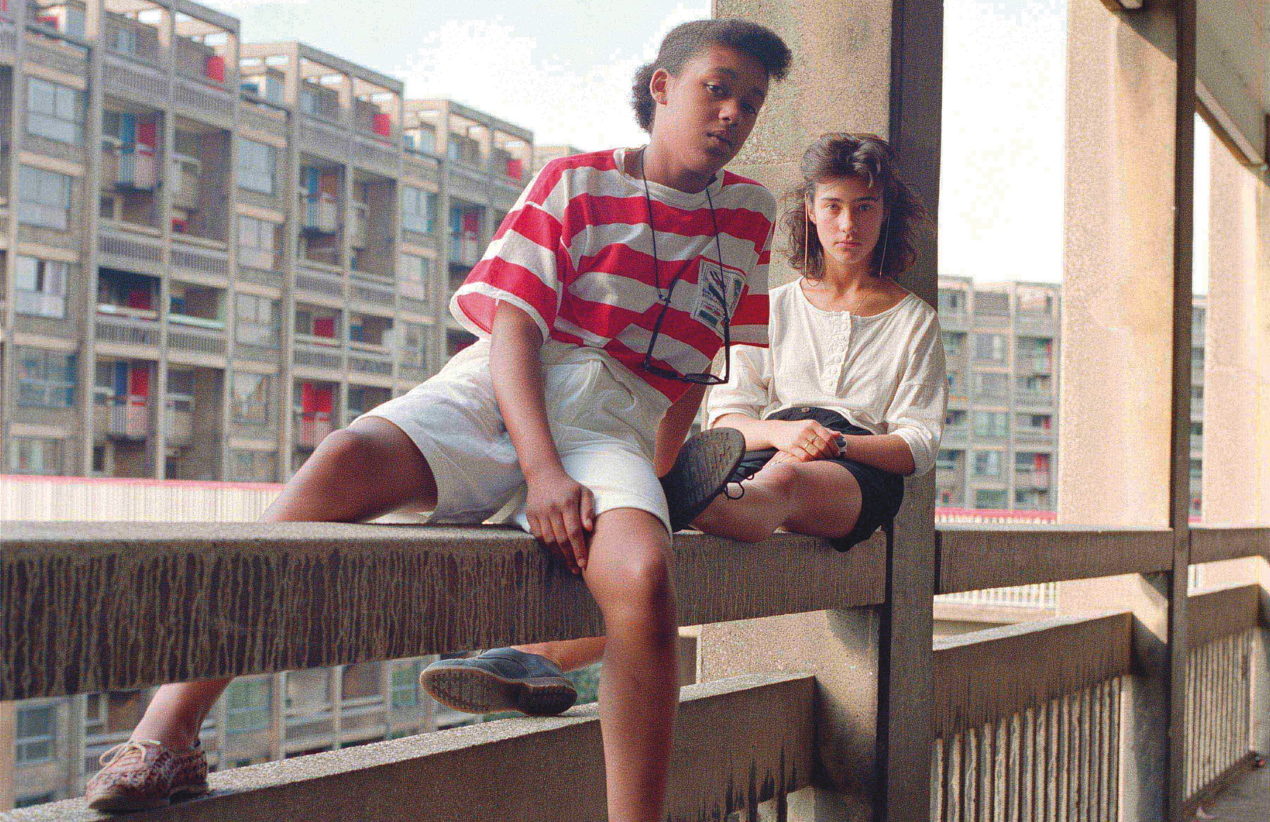Castle on the hill
Sheffield’s Hyde Park and Park Hill flats produce sharply divided opinions, and, in a new exhibition, equally contrasting photography
If we’re to celebrate brutalist architecture – and not everyone agrees we should – it must surely be with humanity at its heart. Bill Stephenson’s photos of Hyde Park in Sheffield do just that.
Stephenson is one of two photographers whose work makes up new exhibition Love Among the Ruins: A Romance of the Near Future. It documents life among the communities of the vast housing estate and neighbouring Park Hill, which were built in the 1960s amid a spirit of modernist utopianism but soon after found themselves plagued with damp, pestilence and concern about the social impact of living in high-density housing.
Yet Stephenson’s 1988 photos, contrast with those of Roger Mayne, whose black and white images of Park Hill, shot in the early 1960s, form the other half of the exhibition.
“If I had met alienated tenants who hated living at Hyde Park my photographs would have reflected that,” says Stephenson. “However, despite years of neglect by the council, all the tenants I met liked living in the flats and did not want to be dispersed to other social housing estates around the city. The tenants regarded the flats as home and a special place to live.”
Fittingly the exhibition is the first in a new gallery at Park Hill. The S1 Artspace is a renovated former garage block at the centre of the estate and launched this month.
The last residents left Hyde Park shortly after Stephenson’s work there and they were demolished in the early 1990s. But Park Hill was given grade II listed status in 1998 – the largest such building in Europe – and, after long decline, is being refurbished by Manchester-based developers Urban Splash.
“I loved the optimism of post-war modernism – the ‘brutalism’ of undecorated concrete facades appeals to me,” says Stephenson, who now lives and works as a commercial photographer in Derbyshire. “However there’s always good and bad architecture.
“One thing that most interested me was that Hyde Park flats were designed as social housing, not a private housing development. Built in a prime location on one of Sheffield’s seven hills close to the bus and railway stations they were a short walk into the city centre. Most of these post-war modernism estates have now been demolished, often by shortsighted city planners.”
Stephenson wanted to make his work distinct from that of Mayne, who died in 2014,d and produced large-scale, highly saturated colour prints in contrast to his predecessor’s 35mm black and white shots. He describes them as “semi-formal portraits, the architecture becoming secondary, a backdrop”. And how did he go about getting them?
“The most important skill a documentary photographer has is gaining accessibility and co-operation from a particular community or group. I try to create an intimacy and understanding between myself and the people I am photographing. This is done by talking and spending time with them.
“Building a relationship with key people who can provide introductions is essential before taking photographs. My social documentary photography has been concerned with the recording of communities most of which no longer exist. A clear narrative, elements within the image that create tension and strong authorship, I hope, characterise my work.”
The redevelopment of Park Hill is something he welcomes. “I’m pleased how architecture evolves through time and buildings are repurposed to suit the needs of the time we live in. The gentrification and grade II listing of Park Hill would, I’m sure, surprise many of the original tenants.”
